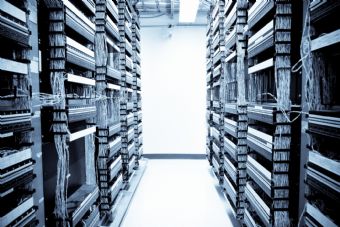A new survey suggests that large data centres might be less energy efficient than was previously thought. The survey, by Digital Realty Trust, quizzed 300 IT decision makers at large corporations in North America, each with annual revenue of at least $1 billion (€765 million) or with at least 5,000 employees.
The results revealed an average Power Usage Effectiveness (PUE) score of 2.9. PUE is a measure of data centre efficiency, and lower scores are better. Ideal scores are close to 1.0, and previous surveys have estimated the average to be closer to 2.0.
PUE is only one way of measuring energy efficiency and there’s no standardised way of calculating it, so the finding isn’t necessarily dire. But it is a data point suggesting that data centres might be less efficient on average than previously thought.
The Uptime Institute, in a survey last year of 1,100 data centre users, reported an average PUE of 1.8 to 1.89. That was an improvement over 2.5 in its 2007 survey. The US Environmental Protection Agency, in 2009, reportedly put the average PUE at 1.91.
Big online firms such as Google and Microsoft have boasted of PUEs of close to 1.0, but they are special cases. Many of the data centres they operate are new, and they invest heavily in IT efficiency, since it affects so much of their overall operating costs.
"While a PUE of 2.9 seems terribly inefficient, we view it as more being closer to the norm than the extremely low (close to 1) figures reported in the media," said Jim Smith, Digital Realty’s CTO, via email. "In our view, those figures represent what a very small number of organisations can achieve based on a unique operating model."
The survey also showed that 20% of respondents reported having a PUE of less than 2.0, while 9% had a PUE of 4.0 or greater.
PUE is a ratio that looks at the total energy supplied to a data centre, divided by the amount of energy that actually reaches the IT equipment. It reveals how much energy is expended on cooling systems and other non-compute functions. A PUE of 2.0 means that for every 2 watts supplied to the data centre, only 1 watt reaches the computing equipment.
The average from this week’s survey can be attributed to older designs and equipment, under-utilised assets, and other design and operating issues, Smith said. There are other factors, too. The figures reported "reinforce the fact that IT is not easy. Designing data centre operations around an organisation’s infrastructure and operations is not a simple task," he said.
The main focus for many data centres is making sure that services remain available, he added. That can mean installing redundant equipment, which creates inefficiency.
Despite the relatively poor PUE score, Digital Realty’s survey points to increased efforts to improve efficiency. Four out of five respondents said they take steps to keep hot exhaust air from servers mixing with cold air used for cooling, known as hot-aisle or cold-aisle containment. That was up from less than two-thirds in 2011. And 85% use some type of data centre infrastructure management software, an emerging class of products that can be used to improve efficiency.
Other findings include:
- Nearly all respondents, 98%, said they plan to expand their data centres in 2013 or 2014, the highest percentage in the seven years Digital Realty has sponsored the survey;
- 65% would prefer to locate a new or expanded data centre in New York City;
- Among international locations, London (39%), Hong Kong (34%) and Tokyo (27%) were mentioned most often;
- 66% have built or acquired a new data centre in the past two years;
- A quarter of respondents reported operating six or more data centres, not including "IT closets" in branch offices;
- The average power density is 8.5kW per rack, and the average IT load is 2.6mW, both up from last year.








Subscribers 0
Fans 0
Followers 0
Followers